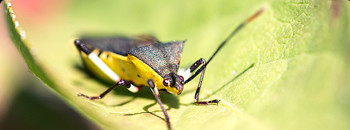With more than 75 percent of flowering plants in need of pollination, it’s important to know how you can support pollinator health. One way we can attract pollinators, like bees, to our own backyards is by creating an inviting habitat for them to thrive.
In honor of Pollinator Week – June 22-28, we’re sharing tips to help create the ultimate bee-friendly garden.
- Bring on the sun: Most pollinator-friendly plants prefer gardens that receive full sun throughout the day.
- Add native plants: Native plants and flowers provide a familiar food to local pollinators when added to your garden beds and containers. Consult your state’s native flower guide or university extension to make sure you’re planting what the bees in your area really want.
- Get Colorful: Can’t decide on which colors you want featured in your garden? Pollinators are most attracted to the blue, violet, yellow or bright white flowers.
- Cluster your flowers: Clustered flowers of one species will attract more pollinators than individual plants scattered throughout your garden. But that doesn’t mean you should only plant one type of flower. Planting various pollinator-attractive plants and flowers gives bees an option to choose from varying flower shapes and continuous blooms, which contributes to the quality and quantity of nectar and pollen sources.
- Provide fresh, clean water: A healthy pollinator garden offers bees clean water sources scattered throughout the garden, such as a bird bath or water feature.
- Bee responsible when using products: Read and follow all label directions before applying lawn and garden pesticides. Apply products when bees aren’t active (just after dawn) and never apply to a flowering plant. If you run into any plant or pest problems, use the Integrated Pest Management approach to choose the right solution to your problem.
To celebrate pollinators and help spread the word about what you can do to provide a nectar-rich and attractive garden for them, visit https://www.debugthemyths.com/environment/pollinator-protection/.

